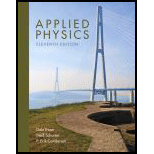
Applied Physics (11th Edition)
11th Edition
ISBN: 9780134159386
Author: Dale Ewen, Neill Schurter, Erik Gundersen
Publisher: PEARSON
expand_more
expand_more
format_list_bulleted
Textbook Question
Chapter 9.1, Problem 36P
A wheel of radius 20.0 cm starts from rest and makes 6.00 revolutions in 2.50 s. (a) Find its
Expert Solution & Answer
Want to see the full answer?
Check out a sample textbook solution
Chapter 9 Solutions
Applied Physics (11th Edition)
Ch. 9.1 - Convert 612 revolutions a. to radians. b. to...Ch. 9.1 - Convert 2880 a. to revolutions. b. to radians.Ch. 9.1 - Convert 25 rad a. to revolutions. b. to degrees.Ch. 9.1 - Convert 12.0 revolutions a. to radians. b. to...Ch. 9.1 - Number of revolutions = 525 t = 3.42 min = ______...Ch. 9.1 - Number of revolutions = 7360 t = 37.0 s = _______...Ch. 9.1 - Number of revolutions = 4.00 t = 3.00 s =...Ch. 9.1 - Number of re volutions = 325 t = 5.00 min =...Ch. 9.1 - Number of revolutions = 6370 t = 18.0s = ________...Ch. 9.1 - Number of revolutions = 6.25 t = 5.05 s =...
Ch. 9.1 - Convert 675 rad/s to rpm.Ch. 9.1 - Convert 285 rpm to rad/s.Ch. 9.1 - Convert 136 rpm to rad/s.Ch. 9.1 - Convert 88.4 rad/s to rpm.Ch. 9.1 - A motor turns at a rate of 11.0 rev/s. Find its...Ch. 9.1 - A rotor turns at a rate 180 rpm. Find its angular...Ch. 9.1 - A rotating wheel completes one revolution in 0.150...Ch. 9.1 - A rotor completes 50.0 revolutions in 3.25 s. Find...Ch. 9.1 - A flywheel rotates at 1050 rpm. (a) How long (in...Ch. 9.1 - A wheel rotates at 36.0 rad/s. (a) How long (in s)...Ch. 9.1 - A shaft of radius 8.50 cm rotates 7.00 rad/s. Find...Ch. 9.1 - Awheel of radius 0.240 m turns at 4.00 rev/s. Find...Ch. 9.1 - A pendulum of length 1.50 m swings through an arc...Ch. 9.1 - An airplane circles an airport twice while 5.00 mi...Ch. 9.1 - A wheel of radius 27.0 cm has an angular speed of...Ch. 9.1 - A belt is placed around a pulley that is 30.0 cm...Ch. 9.1 - A flywheel of radius 25.0 cm is rotating at 655...Ch. 9.1 - An airplane propeller with blades 2.00 m long is...Ch. 9.1 - An automobile is traveling at 60.0 km/h. Its tires...Ch. 9.1 - Ftnd the angular speed (in rad/s) of the following...Ch. 9.1 - A bicycle wheel of diameter 30 0 in rotates twice...Ch. 9.1 - A point on the rim of a flywheel with radius 1.50...Ch. 9.1 - The earth rotates on its axis at an angular speed...Ch. 9.1 - A truck tire rotates at an initial angular speed...Ch. 9.1 - Find the angular acceleration of a radiator fan...Ch. 9.1 - A wheel of radius 20.0 cm starts from rest and...Ch. 9.1 - A circular disk 30.0 cm in diameter is rotating at...Ch. 9.1 - A rotating flywheel of diameter 40.0 cm uniformly...Ch. 9.3 - Given: m = 64.0 kg = 34.0 m/s r = 17.0 m F =...Ch. 9.3 - Given: m = 11.3 slugs = 3.00 ft/s r = 3.24 ft F =...Ch. 9.3 - Given: F = 2500 lb = 47.6 ft/s r = 72.0 ft m =...Ch. 9.3 - Given: F = 587 N = 0.780 m/s m = 67.0 kg r =...Ch. 9.3 - Given: F = 602 N m = 63.0 kg r = 3.20 m =...Ch. 9.3 - Given: m = 37.5 kg = 17.0 m/s r = 3.75 m F =...Ch. 9.3 - Given: F = 75.0 N = 1.20 m/s m = 100 kg r =...Ch. 9.3 - Given: F = 80.0 N m = 43.0 kg r = 17.5 m =...Ch. 9.3 - An automobile of mass 117 slugs follows a curve of...Ch. 9.3 - Find the centripetal force exerted on a 7.12-kg...Ch. 9.3 - The centripetal force on a car of mass 800kg...Ch. 9.3 - The centripetal force on a runner is 17.0 lb. If...Ch. 9.3 - An automobile with mass 1650 kg is driven around a...Ch. 9.3 - A cycle of mass 510 kg rounds a curve of radius 40...Ch. 9.3 - What is the centripetal force exerted on a rock...Ch. 9.3 - What is the centripetal force on a 1500-kg vehicle...Ch. 9.3 - What is the centripetal force on a 750-kg vehicle...Ch. 9.3 - A truck with mass 215 slugs rounds a curve of...Ch. 9.3 - A 225-kg dirt bike is rounding a curve with linear...Ch. 9.3 - A 55,000-kg truck rounds a curve at 62.0 km/h. If...Ch. 9.3 - The radius of a curve is 27.5 m. What is the...Ch. 9.4 - Given: = 125 lb ft = 555 rpm P = ________ ft...Ch. 9.4 - Given: = 39.4 N m = 6.70/s P = _________ WCh. 9.4 - Given: = 372 lb ft = 264 rpm P = __________ hpCh. 9.4 - Given: = 650 N m = 45.0/s P = _________ kWCh. 9.4 - Giver: P = 8950W = 4.80/s = _____________Ch. 9.4 - Given: P = 650W = 540 N m = ________Ch. 9.4 - What horsepower is developed by an engine with...Ch. 9.4 - What torque must be applied to develop 175 ft fb/s...Ch. 9.4 - Find the angular velocity of a motor developing...Ch. 9.4 - A high-speed industrial drill develops 0.500 hp at...Ch. 9.4 - An engine has torque of 550 N m at 8.3 rad/s. What...Ch. 9.4 - Find the angular velocity of a motor developing...Ch. 9.4 - What power (in hp) is developed by an engine with...Ch. 9.4 - Find the angular velocity of a motor developing...Ch. 9.4 - A drill develops 0.500 kW of power at 1800 rpm....Ch. 9.4 - What power is developed by an engine with torque...Ch. 9.4 - A tangential force of 150 N is applied to a...Ch. 9.4 - Find the power developed by an engine with a...Ch. 9.4 - Find the power developed by an engine with a...Ch. 9.4 - Find the power developed by an engine with torque...Ch. 9.4 - Find the angular velocity of a motor daveloping...Ch. 9.4 - A motor develops 0.75 kW of power at 2000...Ch. 9.4 - What power is developed when a tangential force of...Ch. 9.4 - What power is developed when a tangential force of...Ch. 9.4 - An engine develops 1.50 kW of power at 10,000...Ch. 9.4 - A mechanic tightens engine bolts using 45.5 N m of...Ch. 9.4 - An ag mechanic tightens implement bolts using 52.5...Ch. 9.6 - Prob. 1PCh. 9.6 - Prob. 2PCh. 9.6 - Prob. 3PCh. 9.6 - Prob. 4PCh. 9.6 - Prob. 5PCh. 9.6 - Prob. 6PCh. 9.6 - A driver gear has 36 teeth and makes 85.0 rpm....Ch. 9.6 - A motor turning at 1250 rpm is fitted with a gear...Ch. 9.6 - A gear running at 250 rpm meshes with another...Ch. 9.6 - A driver gear with 40 teeth makes 154 rpm. How...Ch. 9.6 - Two gears have a speed ratio of 4.2 to 1. If the...Ch. 9.6 - What size gear should be meshed with a 15-tooth...Ch. 9.6 - A driver gear has 72 teeth and makes 162 rpm. Find...Ch. 9.6 - A driver gear with 60 teeth makes 1600 rpm. How...Ch. 9.6 - What size gear should be meshed with a 20-tooth...Ch. 9.6 - A motor turning at 1500 rpm is fitted with a gear...Ch. 9.6 - The larger of two gears in a clock has 36 teeth...Ch. 9.6 - How many revolutions does an 88-tooth gear make in...Ch. 9.6 - If gear A turns in a clockwise motion, determine...Ch. 9.6 - If gear A turns in a clockwise motion, determine...Ch. 9.6 - If gear A turns in a clockwise motion, determine...Ch. 9.6 - If gear A turns in a clockwise motion, determine...Ch. 9.6 - If gear A turns in a clockwise motion, determine...Ch. 9.6 - If gear A turns in a clockwise motion, determine...Ch. 9.6 - If gear A turns in a clockwise motion, determine...Ch. 9.6 - If gear A turns in a clockwise motion, determine...Ch. 9.6 - If gear A turns in a clockwise motion, determine...Ch. 9.6 - If gear A turns in a clockwise motion, determine...Ch. 9.6 - Find the speed in rpm of gear D in each gear...Ch. 9.6 - Find the speed in rpm of gear D in each gear...Ch. 9.6 - Find the speed in rpm of gear D in each gear...Ch. 9.6 - Find the speed in rpm of gear D in each gear...Ch. 9.6 - Find the speed in rpm of gear D in each gear...Ch. 9.6 - Find the number of teeth for gear D in each rear...Ch. 9.6 - Find the number of teeth for gear D in each gear...Ch. 9.6 - Find the number of teeth for gear D in each gear...Ch. 9.6 - Find the number of teeth for gear D in each gear...Ch. 9.6 - Find the number of teeth for gear D in each gear...Ch. 9.6 - Find the direction of rotation of gear B if gear A...Ch. 9.6 - Find the effect of doubling the number of teeth on...Ch. 9.7 - Find each missing quantity using DN = dn. 1.Ch. 9.7 - Find each missing quantity using DN = dn. 2.Ch. 9.7 - Find Bach missing quantity using DN = dn. 3.Ch. 9.7 - Find each missing quantity using DN = dn. 4.Ch. 9.7 - Find each missing quantity using DN = dn. 5.Ch. 9.7 - A driver pulley of diameter 6.50 in. revolves at...Ch. 9.7 - A driver pulley of diameter 25.0 cm revolves at...Ch. 9.7 - One pulley of diameter 36.0 cm revolves at 600...Ch. 9.7 - One pulley rotates at 450 rpm. The diameter of the...Ch. 9.7 - A pulley with a radius of 10.0 cm rotates at 120...Ch. 9.7 - Determine the direction of pulley B in each pulley...Ch. 9.7 - Determine the direction of pulley B in each pulley...Ch. 9.7 - Determine the direction of pulley B in each pulley...Ch. 9.7 - Determine the direction of pulley B in each pulley...Ch. 9.7 - Determine the direction of pulley B in each pulley...Ch. 9.7 - What size pulley should be placed on a...Ch. 9 - Angular velocity is measured in a....Ch. 9 - Power in the rotational system a. is found in the...Ch. 9 - A gear train has 13 directly connected gears. The...Ch. 9 - Distinguish between curvilinear motion and...Ch. 9 - Name the two types of measurement of rotation.Ch. 9 - In your own words, define radian.Ch. 9 - What is angular displacement? In what units is it...Ch. 9 - How is linear velocity of a point on a circle...Ch. 9 - How do equations for uniformly accelerated...Ch. 9 - A girl jumping from a high platform into a pool...Ch. 9 - Is the tangent to a circle always perpendicular to...Ch. 9 - Will inertia tend to keep a moving body following...Ch. 9 - Explain the relationship between the number of...Ch. 9 - How does the presence of an idler gear affect the...Ch. 9 - When the number of directly connected gears in a...Ch. 9 - How do pulley combination equations compare to...Ch. 9 - If a large pulley and a small pulley are connected...Ch. 9 - How do we know the belt connecting two pulleys...Ch. 9 - Convert 13 revolutions to (a) radians and...Ch. 9 - A bicycle wheel turns 25 rad during 45 s. Find the...Ch. 9 - A lawn tractor tire turns at 65.0 rpm and has a...Ch. 9 - A model plane pulls into a tight curve of a radius...Ch. 9 - A 0.950-kg mass is spun in a circle on a string of...Ch. 9 - A girl riding her bike creates a torque of 1.20 lb...Ch. 9 - A motor generates 300 W of power. The torque...Ch. 9 - Two rollers are side by side, with the large one...Ch. 9 - A clock is driven by a series of gears. The first...Ch. 9 - Two gears have 13 and 26 teeth, respectively. The...Ch. 9 - A gear train has 17 directly connected gears. Do...Ch. 9 - A pulley of diameter 14.0 cm is driven by an...Ch. 9 - A pulley of diameter 5.00 cm is driven at 100 rpm....Ch. 9 - If gear C turns counterclockwise, in what...Ch. 9 - Find the speed in rpm of gear D.Ch. 9 - Find the number of teeth in gear D.Ch. 9 - As part of their training, NASA astronauts are...Ch. 9 - Waterwheels are used to convert kinetic energy...Ch. 9 - A hairpin turn on a concrete racetrack has a...Ch. 9 - (a) How much power does a motorcycle need to...
Additional Science Textbook Solutions
Find more solutions based on key concepts
Consider two waves y1(x,t) and y2(x,t) that are identical except for a phase shift propagating in the same medi...
University Physics Volume 1
(II) What is the linear speed of a point (a) on the equator, (b) on the Arctic Circle (latitude 66.5 N), and (c...
Physics for Scientists and Engineers with Modern Physics
22. Blue light of wavelength 450 nm passes through a diffraction grating with a slit spacing of 0.001 mm and ma...
College Physics: A Strategic Approach (4th Edition)
1. Which part of an atom is positively charged, anti which part is negatively charged?
Conceptual Physical Science (6th Edition)
24.(I) A light plane must reach a speed of 35 m/s for takeoff. How long a runway is needed if the (constant) ac...
Physics: Principles with Applications
1. When is energy most evident?
Conceptual Physics (12th Edition)
Knowledge Booster
Learn more about
Need a deep-dive on the concept behind this application? Look no further. Learn more about this topic, physics and related others by exploring similar questions and additional content below.Similar questions
- A constant torque is applied to a rigid body whose moment of inertia is 4.0kgm2 around the axis of rotation. If the wheel starts from rest and attains an angular velocity of 20.0 rad/s in 10.0 s, what is the applied torque?arrow_forwardA solid cylinder of radius 10.0 cm rolls down an incline with slipping. The angle of the incline is 30 . The coefficient of kinetic friction on the surface is 0.400. What is the angular acceleration of the solid cylinder? What is the linear acceleration?arrow_forwardA rigid body with a cylindrical cross-section is released from the top of a 30 incline. It rolls 10.0 m to the bottom in 2.60 s. Find the moment of inertia of the body In terms of its mass m and radius r.arrow_forward
- Calculate the rotational kinetic energy of a 12-kg motorcycle wheel if its angular velocity is 120 rad/s and its inner radius is 0.280 m and outer radius 0.330 m.arrow_forwardA hollow cylinder that is rolling without slipping is given a velocity of 5.0 m/s and rolls up an incline to a vertical height of 1.0 m. If a hollow sphere of the same mass and radius is given the same initial velocity how high vertically does it roll up the incline?arrow_forwardThe precession angular velocity of a gyroscope is 1.0 rad/s. If the mass of the rotating disk is 0.4 kg and its radius is 30 cm, as well as the distance from the center of mass to the pivot, what is the rotation rate in rev/s of the disk?arrow_forward
- A 40.0-kg solid cylinder is rolling across a horizontal surface at a speed of 6.0 m/s. How much work is required to stop it?arrow_forwardA playground merry-go-round of radius R = 2.00 m has a moment of inertia I = 250 kg m2 and is rotating at 10.0 rev/min about a frictionless, vertical axle. Facing the axle, a 25.0-kg child hops onto the merry-go-round and manages to sit down on the edge. What is the new angular speed of the merry-go-round?arrow_forwardA turntable (disk) of radius r = 26.0 cm and rotational inertia0.400 kg m2 rotates with an angular speed of 3.00 rad/s arounda frictionless, vertical axle. A wad of clay of mass m =0.250 kg drops onto and sticks to the edge of the turntable.What is the new angular speed of the turntable?arrow_forward
- A massless tether with a masses tied to both ends rotates about a fixed axis through the center. Can the total acceleration of the tether mass combination be zero If the angular velocity Is constant?arrow_forwardA baseball pitcher throws the ball in a motion where there is rotation of the forearm about the elbow joint as well as other movements. If the linear velocity of the ball relative to the elbow joint is 20.0 m/s at a distance of 0.480 m from the joint and the moment of inertia of the forearm is 0.500kg-m2 , what is the rotational kinetic energy of the forearm?arrow_forwardCheck Your Understanding What is the moment of inertia of a cylinder of radius R and mass m about an axis through a point on the surface, as shown below? A uniform thin disk about an axis through the center Integrating to find the moment of inertia of a two-dimensional object is a little bit trickier, but one shape is commonly done at this level of study—a uniform thin disk about an axis through its center (Figure 10.27). Figure 10.27 Calculating the moment of inertia for a thin disk about an axis through its center.arrow_forward
arrow_back_ios
SEE MORE QUESTIONS
arrow_forward_ios
Recommended textbooks for you
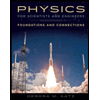 Physics for Scientists and Engineers: Foundations...PhysicsISBN:9781133939146Author:Katz, Debora M.Publisher:Cengage Learning
Physics for Scientists and Engineers: Foundations...PhysicsISBN:9781133939146Author:Katz, Debora M.Publisher:Cengage Learning Principles of Physics: A Calculus-Based TextPhysicsISBN:9781133104261Author:Raymond A. Serway, John W. JewettPublisher:Cengage Learning
Principles of Physics: A Calculus-Based TextPhysicsISBN:9781133104261Author:Raymond A. Serway, John W. JewettPublisher:Cengage Learning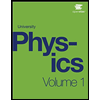 University Physics Volume 1PhysicsISBN:9781938168277Author:William Moebs, Samuel J. Ling, Jeff SannyPublisher:OpenStax - Rice University
University Physics Volume 1PhysicsISBN:9781938168277Author:William Moebs, Samuel J. Ling, Jeff SannyPublisher:OpenStax - Rice University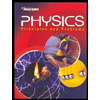 Glencoe Physics: Principles and Problems, Student...PhysicsISBN:9780078807213Author:Paul W. ZitzewitzPublisher:Glencoe/McGraw-Hill
Glencoe Physics: Principles and Problems, Student...PhysicsISBN:9780078807213Author:Paul W. ZitzewitzPublisher:Glencoe/McGraw-Hill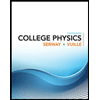 College PhysicsPhysicsISBN:9781305952300Author:Raymond A. Serway, Chris VuillePublisher:Cengage Learning
College PhysicsPhysicsISBN:9781305952300Author:Raymond A. Serway, Chris VuillePublisher:Cengage Learning

Physics for Scientists and Engineers: Foundations...
Physics
ISBN:9781133939146
Author:Katz, Debora M.
Publisher:Cengage Learning

Principles of Physics: A Calculus-Based Text
Physics
ISBN:9781133104261
Author:Raymond A. Serway, John W. Jewett
Publisher:Cengage Learning

University Physics Volume 1
Physics
ISBN:9781938168277
Author:William Moebs, Samuel J. Ling, Jeff Sanny
Publisher:OpenStax - Rice University

Glencoe Physics: Principles and Problems, Student...
Physics
ISBN:9780078807213
Author:Paul W. Zitzewitz
Publisher:Glencoe/McGraw-Hill

College Physics
Physics
ISBN:9781305952300
Author:Raymond A. Serway, Chris Vuille
Publisher:Cengage Learning
Rotational Kinetic Energy; Author: AK LECTURES;https://www.youtube.com/watch?v=s5P3DGdyimI;License: Standard YouTube License, CC-BY